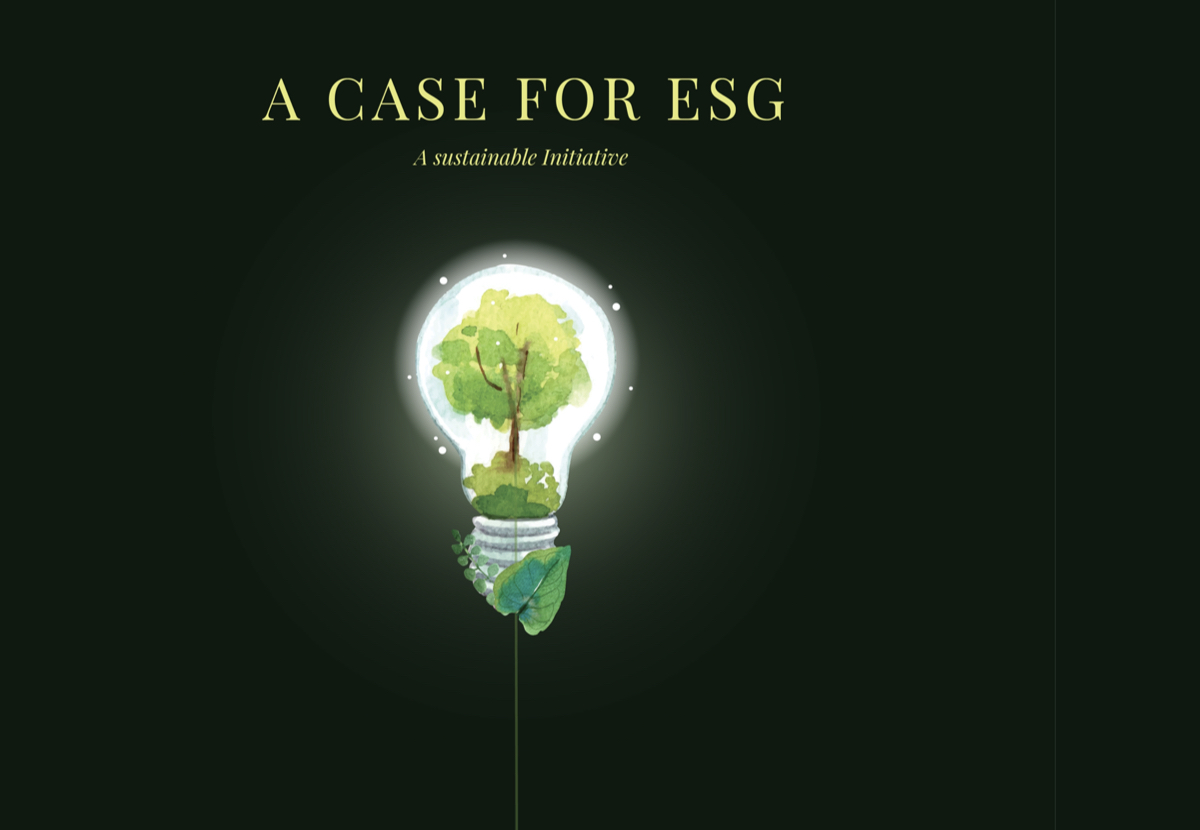


ESG links to cash flow in important ways such as promoting top-line growth, reducing costs, minimizing legal and regulatory issues and improving employee productivity. These aspects should be part of a leader’s mental checklist when approaching ESG. ESG integration and the associated Impact Outcomes when measured over time could be far more fascinating and valuable than just an IRR or MOIC on an investment.
I have been guilty of looking at Environmental, Social and Governance (“ESG”) frameworks from a “check- box” or "compliance lens” but when you look beyond ESG and try to gauge "Impact"; the possibilities are infinite.
Impact is forward looking and change provoking. It could be seen in the way a business promotes gender diversity, facilitates outreach, fosters equality and inclusivity, reduces carbon foot print, promotes process innovation, or even achieves more resilience.
ESG is a risk mitigation framework. An ESG strategy would mean investing in companies that score high on three non-financial parameters—environment friendliness, social responsibility, and governance. On the other hand; Impact investing is an investment strategy that generates financial returns coupled with positive measurable social and/or environmental outcomes.
Increasingly stakeholders want their businesses to be more sustainable and “to care” as they scale. Fund of funds, high net-worth investors, PE-VC funds, financial intermediaries, broking houses, and even Limited Partners have to demonstrate that they are investing and choosing portfolio companies that generate returns sustainably. Further, even if one argued that ESG factors do not improve performance, there is no recent evidence that suggests that integrating ESG will hurt performance. Simply put, ESG is a philosophy on which a good business should be built.
ESG links to cash flow in important ways such as promoting top-line growth, reducing costs, minimizing legal and regulatory issues, improving employee productivity. These aspects should be part of a leader’s mental checklist when approaching ESG. ESG integration and the associated “Impact Outcomes” when measured over time; could be far more fascinating and valuable than just an IRR or MOIC on an investment
ESG as a trend is picking up
As per Prequin’s November 2018 survey, almost 83% of investors and fund managers are certain that ESG will become an important investment consideration over the next 5 years.
Rise in ESG funds
Globally, the number of actively managed funds adding ESG criteria to their prospectuses exploded in 2019. Therefore, investment professionals should consider ESG factors as an important part of the analytical and investment decision-making process, regardless of investment style, asset class, or investment approach.
Rise of responsible investing
The PRI (An investor initiative in partnership with UNEP Finance Initiativeand UN Global Compact) PRI refers to “Principles of Responsible Investing”. It now has over 3000+ signatories; 500+asset owners and close to US$ 80 trillion in AUM. The PRI is the world’s leading proponent of responsible investment that works to understand the investment implications of ESG factors and encourages investors to use responsible investment to enhance returns and better manage risks. As is evident, most fund of funds and institutional investors are adopting PRI principles of investing in their global investments. This means ESG considerations are becoming much more than just “good to have”.
Conscious Consumerism
On the consumer front; from free-range meat to vegan skincare products, from slow fashion to preference for “sustainable green brands”, millennials are driving the sustainable movement with their lifestyle and behavioral changes. So, if you are a stakeholder in consumer brands, Green is the way to go!
Green Bonds and Fund raising
The global green bond market is projected at a $200 billion by Moody’s at the end of 2020. Green bonds are debt securities issued to finance green projects and assets and can be issued by governments, corporations, and financial institutions. In India, the Green bond issued between 2015 and 2018 November stood at $7.15 billion. Across the green bond market there is a broad spectrum of different debt instruments such as placements, covered bonds, and green loans. Green bonds and equity based private placements are opportunities for companies, funds and corporations to attract funds from Impact focused investors. Top sectors include sustainable water, pollution prevention, sustainable agriculture, sustainable transport, alternative energy and many more such areas.
Market returns
The stock markets seem to love the ESG story; and the returns are here to speak for it. In the Indian context, over the long term, the ESG index has delivered a superior performance as compared to traditional market-cap weighted indices.
"The most successful businesses are the ones that are profitable but that also help improve the lives of other people"
Regulatory Push
Globally and in India, regulators and stock exchanges are driving changes in ESG reporting and disclosures, although there is room for improvement in terms of quality. In 2018, 90% (57/63) of the exchanges listed with the World Federation of Exchanges said they had some form of ESG initiative. They reported a variety of ESG interventions targeting both external (regulators, issuers, investors) and internal (staff and management) stakeholders. The value proposition of ESG disclosures needs to be better articulated to motivate companies and boards to make improvements in this area. Indian regulators also need to look beyond CSR (Corporate Social responsibility) and make ESG reporting a compliance norm.
The case for ESG is certainly compelling and ESG investing should not stop at a company or an industry. For a conscious investor, it is more of an “investment philosophy”. It provides an opportunity for investors to align their personal values and beliefs, with their financial goals of delivering top class returns that are also “Change promoting and Socially Equitable”!
Note: This blog is a one of the many series on “ESG and Impact” and I will continue to share my views as I learn along the way.